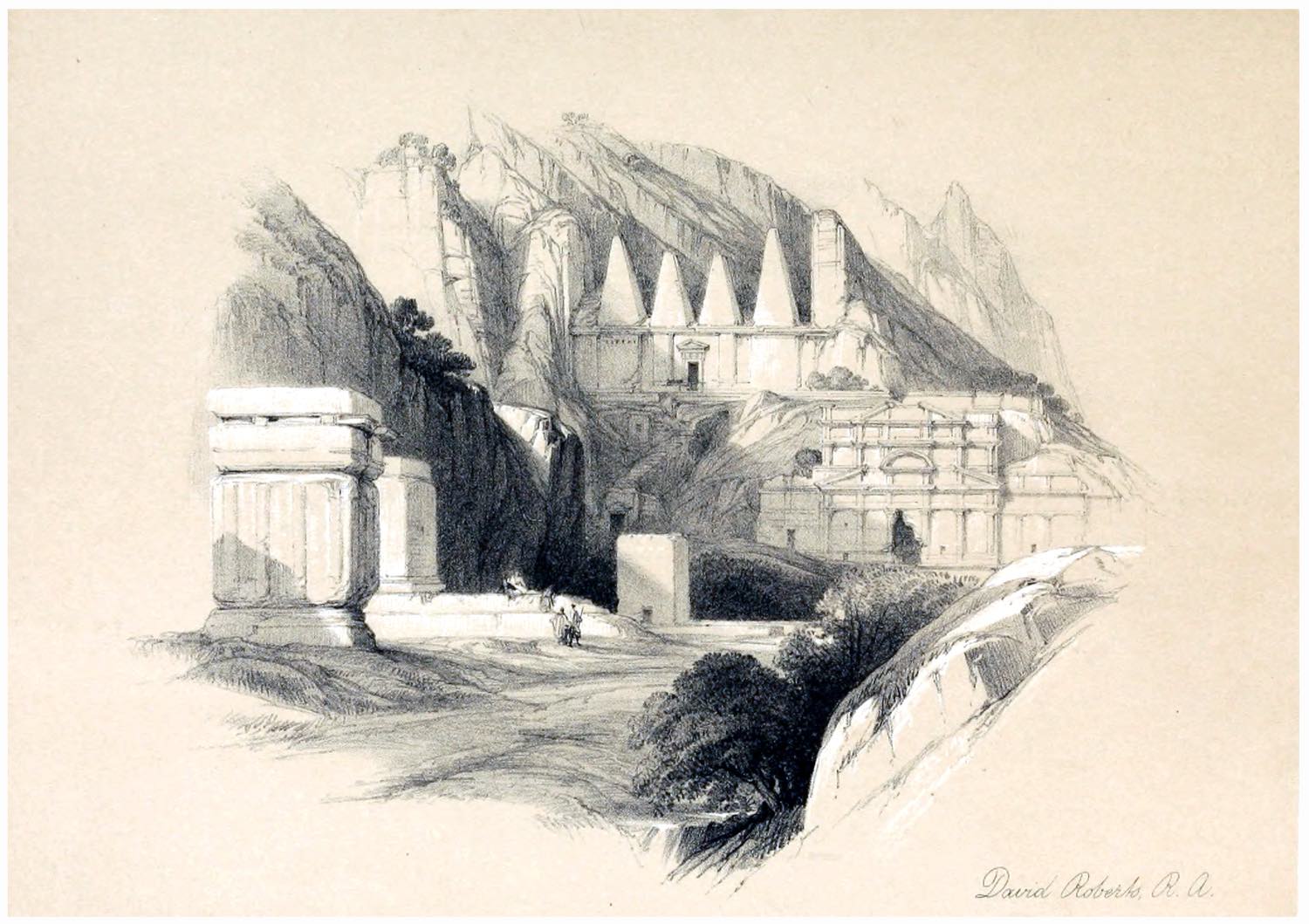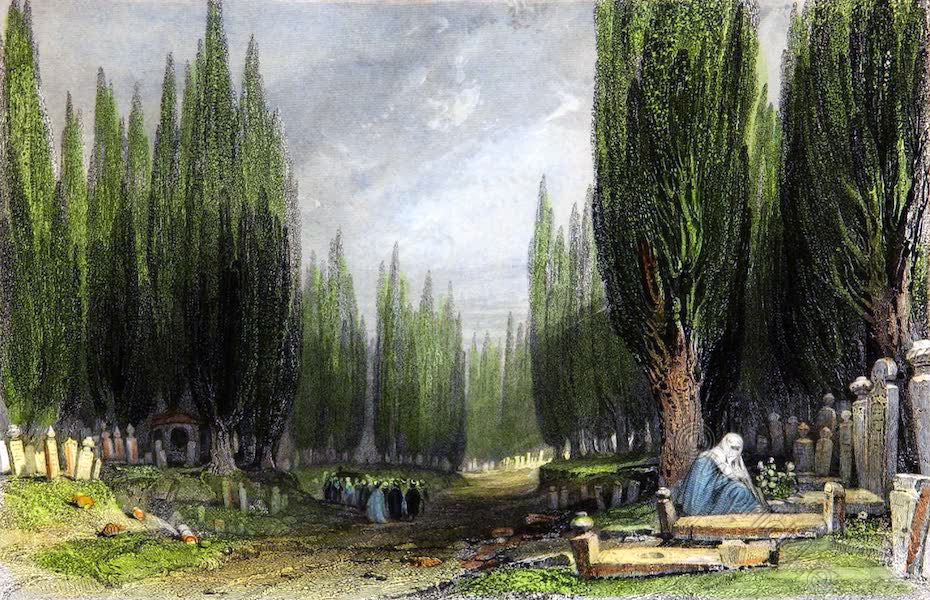
PLATE 2.
THE BAY AND NECROPOLIS OF ANCON.
Fig. 1. The topographical plan figured on Plate 1 comprises a small portion only of the spacious and picturesque Bay of Ancon. A fuller view is given by this plate, which reproduces the scene with all its local colouring. Here the deep blue sea contrasts with the yellow sandy flats and bare rugged hills, with light effects seldom elsewhere seen, especially when the atmospheric strata, charged with dust and resting on the hot sandy ground, are lit up by the oblique rays of the setting sun. No trace of vegetation is perceptible, the small scale of the plan excluding the few eucalyptuses, a couple of date-palms and some fig- trees sustained by artificial irrigation. So arid is the district that even drinking-water has to be brought from a great distance.
The modern bathing-place stands on the level beach at the foot of the sand-covered heights. The houses are all disposed in long rows and built of wood timbered in Oregon.
The burial-ground is enclosed by the hilly tract bordering the town northwards, to the left of the observer. It presents the appearance of a broad valley falling seawards, evidently the dried up bottom of the inlet which formerly penetrated further inland. In the sandy and gravelly deposits of the old sea-bed lie the graves containing the mummies. The arid character of the land, so well illustrated in the plate, causes some surprise that a place evidently affording the scantiest means of existence should have supported such a large population as seems implied by a cemetery, whose tombs are reckoned by the thousand.
In the background are seen high, naked ridges, members of a mountain range representing one of those offshoots which the Andes sends coastwards. The farther development of these ridges is represented in plates 3 and 4, while Fig. 2 of the present plate shows a view in a smaller distance.
Along the hills beyond the bay runs the gradually rising line of the railway intended to connect Lima with the fertile valley of Huacho, but which has been completed only to the town of Chancay. This section, carried along the steep slopes through accumulated masses of shifting sands, was attended with great difficulties; nor was it perhaps quite possible altogether to protect the traffic from the imminent danger of landslips.
Fig. 2. Looking eastwards from the eastern edge of the central hilly plateau of the burial-place, we see the line of graves marked by the number 3 on the plan, Plate 1. The masses of sand and gravel thrown up on the opening of the graves, have formed ring-shaped mounds on the originally level ground. Scattered amongst them lie human skulls, matting and potsherds, the melancholy evidence of former reckless exhumations. Gradually rising, the plain stretches landwards towards the foot of the high rugged range. The spurs are covered to a considerable height by sand, which even on the plain forms those already mentioned shifting dunes (raedanos), distinguished by their crescent shape. The ground is everywhere strewn with shells, fragments of rock and dark-coloured boulders, mostly with polished surface, an effect that must be attributed to the action of the drift-sand. As here seen in perspective, these boulders standing on the brow of the hills rising above the rolling ground seem to be disposed in regular rows.
The lofty mountains in the background represent the same chain as in Fig. 1; but owing to the altered stand-point they here appear foreshortened against each other.
To the right of the illustration a view is afforded of the glen-like depression bordered southwards by those mountains, whose most advanced spurs, enclosing the Bay of Ancon, are figured on Plate 3. Notwithstanding the deep gorges intersecting the range, the riverbeds are dry and arid. Even on the extremely rare occasion of a copious downpour watering the bare slopes, the mountain torrents thereby developed are prevented by the thirsty soil from reaching the coast.
Source: The necropolis of Ancon in Peru: a contribution to our knowledge of the culture and industries of the empire of the Incas being the results of excavations made on the spot by Wilhelm Reiss (1838-1908); Alphons Stübel (1835-1904), joint author; Wilhelm Greve, lithographer; Augustus Henry Keane (1833-1912), translator; Ludwig Wittmack (1839-1929); Rudolf Virchow (1821-1902); Alfred Nehring (1845-1904). Berlin: A. Asher & Co.; New York : Sole agent for America, Dodd, Mead & Company, 755 Broadway, 1880.
Continuing
I. The Necropolis and Neighbourhood.
Discover more from World4 Costume Culture History
Subscribe to get the latest posts sent to your email.






